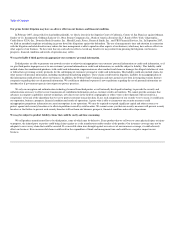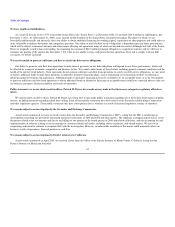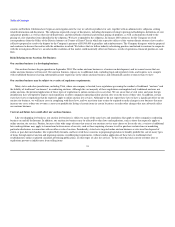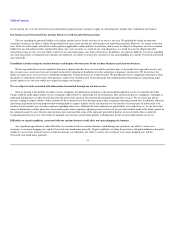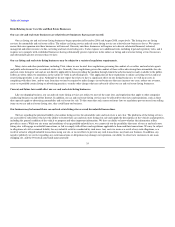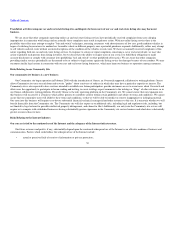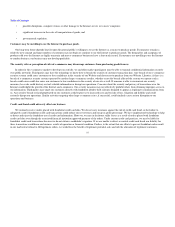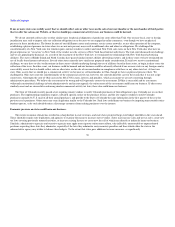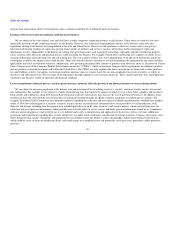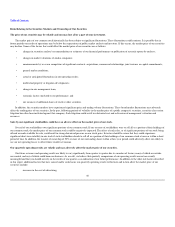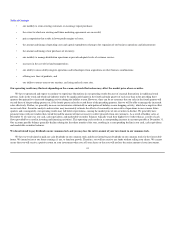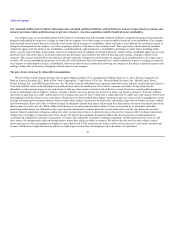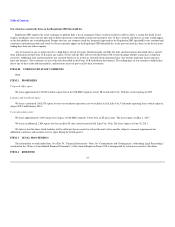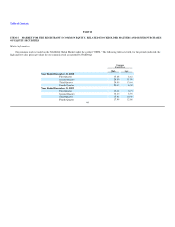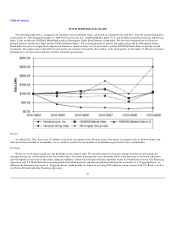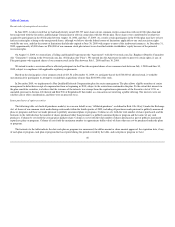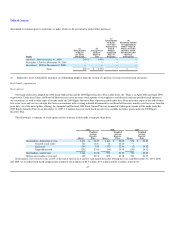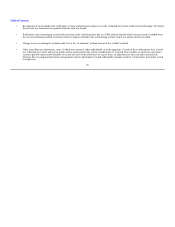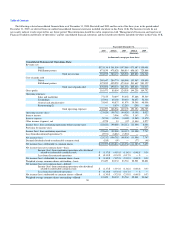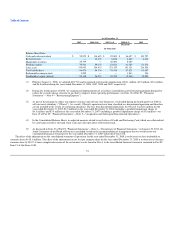Overstock.com 2009 Annual Report Download - page 44
Download and view the complete annual report
Please find page 44 of the 2009 Overstock.com annual report below. You can navigate through the pages in the report by either clicking on the pages listed below, or by using the keyword search tool below to find specific information within the annual report.
Table of Contents
our inability to retain existing customers or encourage repeat purchases;
the extent to which our existing and future marketing agreements are successful;
price competition that results in lower profit margins or losses;
the amount and timing of operating costs and capital expenditures relating to the expansion of our business operations and infrastructure;
the amount and timing of our purchases of inventory;
our inability to manage distribution operations or provide adequate levels of customer service;
increases in the cost of fuel and transportation;
our ability to successfully integrate operations and technologies from acquisitions or other business combinations;
offering new lines of products; and
our ability to attract users to our auctions, car listing and real estate sites.
Our operating results may fluctuate depending on the season, and such fluctuations may affect the market price of our securities.
We have experienced and expect to continue to experience fluctuations in our operating results because of seasonal fluctuations in traditional retail
patterns. Sales in the retail and wholesale industry tend to be significantly higher in the fourth calendar quarter of each year than in the preceding three
quarters due primarily to increased shopping activity during the holiday season. However, there can be no assurance that our sales in the fourth quarter will
exceed those of the preceding quarters or, if the fourth quarter sales do exceed those of the preceding quarters, that we will be able to manage the increased
sales effectively. Further, we generally increase our inventories substantially in anticipation of holiday season shopping activity, which has a negative effect
on our cash flow. Securities analysts and investors may inaccurately estimate the effects of seasonality on our results of operations in one or more future
quarters and, consequently, our operating results may fall below expectations, causing the market price of our securities to decline. We generally have
payment terms with our vendors that extend beyond the amount of time necessary to collect proceeds from our customers. As a result of holiday sales, at
December 31 of each year, our cash, cash equivalents, and marketable securities balances typically reach their highest level (other than as a result of cash
flows provided by or used in investing and financing activities). This operating cycle results in a corresponding increase in accounts payable at December 31.
Our accounts payable balance generally declines during the first three months of the year, resulting in a corresponding decline in our cash, cash equivalents,
and marketable securities balances.
We do not intend to pay dividends on our common stock and you may lose the entire amount of your investment in our common stock.
We have never declared or paid any cash dividends on our common stock and do not intend to pay dividends on our common stock for the foreseeable
future. We intend to invest our future earnings, if any, to fund our growth. Therefore, you will not receive any funds without selling your shares. We cannot
assure that you will receive a positive return on your investment when you sell your shares or that you will not lose the entire amount of your investment.
41
•
•
•
•
•
•
•
•
•
•


